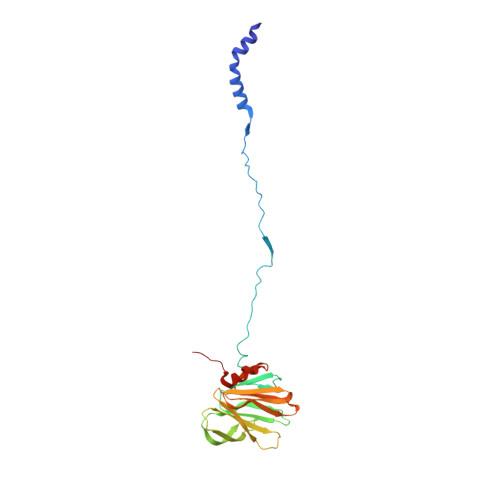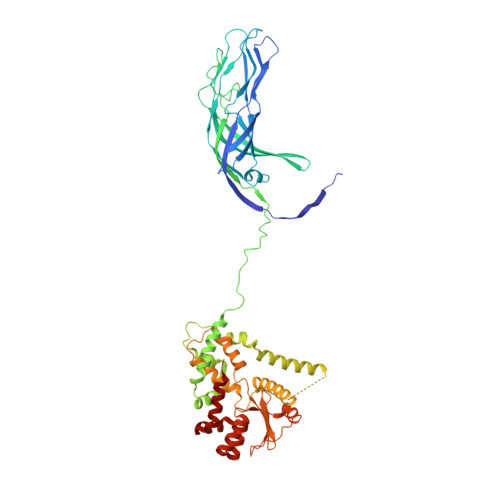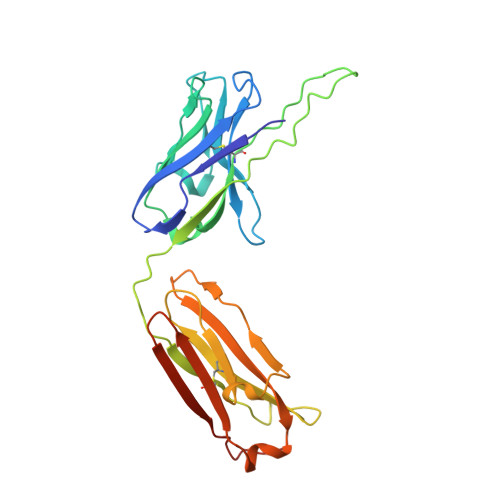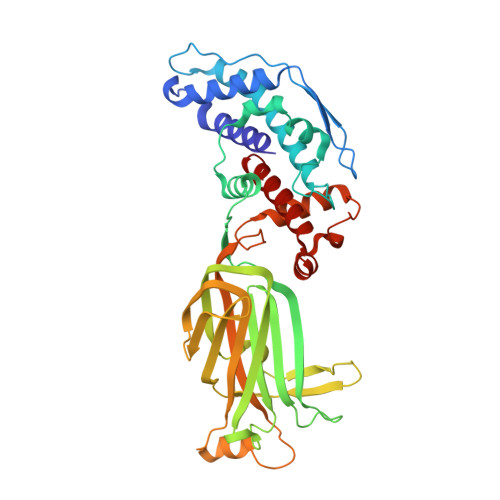Rotavirus VP4 Epitope of a Broadly Neutralizing Human Antibody Defined by Its Structure Bound with an Attenuated-Strain Virion.
Jenni, S., Li, Z., Wang, Y., Bessey, T., Salgado, E.N., Schmidt, A.G., Greenberg, H.B., Jiang, B., Harrison, S.C.(2022) J Virol 96: e0062722-e0062722
- PubMed: 35924923
- DOI: https://doi.org/10.1128/jvi.00627-22
- Primary Citation of Related Structures:
7UMS, 7UMT - PubMed Abstract:
Rotavirus live-attenuated vaccines, both mono- and pentavalent, generate broadly heterotypic protection. B-cells isolated from adults encode neutralizing antibodies, some with affinity for VP5*, that afford broad protection in mice. We have mapped the epitope of one such antibody by determining the high-resolution cryo-EM structure of its antigen-binding fragment (Fab) bound to the virion of a candidate vaccine strain, CDC-9. The Fab contacts both the distal end of a VP5* β-barrel domain and the two VP8* lectin-like domains at the tip of a projecting spike. Its interactions with VP8* do not impinge on the likely receptor-binding site, suggesting that the mechanism of neutralization is at a step subsequent to initial attachment. We also examined structures of CDC-9 virions from two different stages of serial passaging. Nearly all the VP4 (cleaved to VP8*/VP5*) spikes on particles from the earlier passage (wild-type isolate) had transitioned from the "upright" conformation present on fully infectious virions to the "reversed" conformation that is probably the end state of membrane insertion, unable to mediate penetration, consistent with the very low in vitro infectivity of the wild-type isolate. About half the VP4 spikes were upright on particles from the later passage, which had recovered substantial in vitro infectivity but had acquired an attenuated phenotype in neonatal rats. A mutation in VP4 that occurred during passaging appears to stabilize the interface at the apex of the spike and could account for the greater stability of the upright spikes on the late-passage, attenuated isolate. IMPORTANCE Rotavirus live-attenuated vaccines generate broadly heterotypic protection, and B-cells isolated from adults encode antibodies that are broadly protective in mice. Determining the structural and mechanistic basis of broad protection can contribute to understanding the current limitations of vaccine efficacy in developing countries. The structure of an attenuated human rotavirus isolate (CDC-9) bound with the Fab fragment of a broadly heterotypic protective antibody shows that protection is probably due to inhibition of the conformational transition in the viral spike protein (VP4) critical for viral penetration, rather than to inhibition of receptor binding. A comparison of structures of CDC-9 virus particles at two stages of serial passaging supports a proposed mechanism for initial steps in rotavirus membrane penetration.
- Department of Biological Chemistry and Molecular Pharmacology, Harvard Medical Schoolgrid.471403.5, Boston, Massachusetts, USA.
Organizational Affiliation:
























